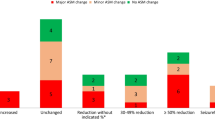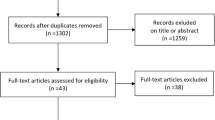Abstract
Background
The purpose of the study was to evaluate lipid homeostasis before and after treatment of everolimus, the mammalian target of the rapamycin (mTOR) inhibitor, among patients with tuberous sclerosis complex (TSC).
Methods
The study group consisted of 15 patients with a diagnosis of subependymal giant cell astrocytoma (SEGA) related to TSC. The following lipid parameters were determined: total serum cholesterol (TCh), low-density lipoprotein cholesterol (LDL), high-density lipoprotein cholesterol (HDL), total serum triglyceride (TG) concentration at baseline, then after three and 12 months of observation. The values were compared with those of age-matched healthy controls.
Results
In the study group TCh, LDL and HDL levels at baseline were significantly higher than in the control group. TCh and LDL levels were positively correlated with baseline SDS-BMI in TSC patients. Everolimus treatment resulted in significant increases of TCh (from 192.04 ± 40.51 mg/dl to 210.74 ± 51.12 mg/dl and to 216.69 ± 45.43 mg/dl; p = 0.0273) and LDL (from 113.21 ± 38.72 mg/dl to 133.88 ± 50.71 mg/dl and to 141.58 ± 40.67 mg/dl; p = 0.0006) after three and 12 months respectively. The differences between the TCh and LDL levels at baseline and after 12 months of therapy were negatively correlated with baseline SDS-BMI. The observed increase of BMI after 12 months was correlated with increases in TCh and LDL levels.
Conclusions
Patients with TSC have disrupted lipid homeostasis before and during treatment with everolimus, which might be partially connected to the mTOR-dependent nutritional status of the patients. There is a need to develop strategies for children with TSC treated with everolimus, who experience hyperlipidemia.
Similar content being viewed by others
References
Huang J, Manning BD. The TSC1-TSC2 complex: a molecular switchboard controlling cell growth. Biochem J 2008;412(2):179–90.
Kohrman MH. Emerging treatments in the managements of tuberous sclerosis complex. Pediatr Neurol 2012;46(5):267–75.
Lamming DW, Sabatini DM. A central role for mTOR in lipid homeostasis. Cell Metab 2013;18(4):465–9.
Chakrabarti P, English T, Shi J, Smas CM, Kandor KV. Mammalian target of rapamycin complex 1 supresses lipolysis: stimulates lipogenesis and promotes fat storage. Diabetes 2010;59(4):775–81.
Jankowska I, Czubkowski P, Socha P, Wierzbicka A, Teisseyre M, Teisseyre J, et al. Lipid metabolism and oxydative stress in children after liver transplantation treated with sirolimus. Pediatr Transplant 2012;16:901–6.
Sivendran S, Agarwal N, Gartrell B, Ying J, Boucher KM, Choueiri TK, et al. Metabolic complications with use of mTOR inhibitors for cancer therapy. Cancer Treat Rev 2014;40(1):190–6.
Franz DN, Belousova E, Sparagana S, Bebin EM, Frost M, Kuperman R, et al. Efficacy and safety of everolimus for subependymal giant cell astrocytomas associated with tuberous sclerosis complex (EXIST-1); a multicenter, randomized, placebo-controled phase 3 trial. Lancet 2013;381:125–32.
Bissler JJ, Kingswood JC, Radzikowska E, Zonnenberg BA, Frost M, Belousova E, et al. Everolimus for angiomiolipoma associated with tuberous sclerosis complex or sporadic lymphangioleiomyomatosis (EXIST-2): a multicenter, randomized, double-blind, placebo-controlled trial. Lancet 2013;381:817–24.
Soliman GA, Acosta-Jaquez HA, Fingar DC. mTORC1 inhibition via rapamycin promotes triacylglycerol lipolysis and release of free fatty acids in 3T3-L1 adipocytes. Lipids 2010;45(12):1089–100.
Houde VP, BrÛlé S, Festuccia WT, Blanchard PG, Bellmann K, Deshaies Y, et al. Chronic rapamycin treatment causes glucose intolerance and hyperlipidemia by upregulating hepatic gluconeogenesis and imparing lipid deposition in adipose tissue. Diabetes 2010;59(6): 1338–48.
Roach ES, Gomez MR, Northrup H. Tuberous Sclerosis Complex Consensus Conference: revised clinical diagnostic criteria. J Child Neurol 1998;13:624–8.
Northrup H, Kruger DA. Tuberous sclerosis complex diagnostic criteria update: recommendations of the 2012 International Tuberous Sclerosis Complex Consensus Conference. Pediatr Neurol 2013;49:243–54.
Borowiec A, Pawlowska E, Jazwiec R, Zochowska D, Bartlomiejczyk I, et al. Two rapid ultra performance liquid chromatography/tandem mass spectrometry (UPLC/MS/MS) methods with common sample pretreatment for therapeutic drug monitoring of immunosuppressants compared to immunoassay. J Chromatogr B Analyt Technol Biomed Life Sci 2013;928:9–15.
Fendler W, Borowiec M, Antosik K, Szadkowska A, Deja G, Jarosz-Chobot P, et al. HDL cholesterol as a diagnostic tool for clinical differentiation of GCK-MODY from HNF1A-MODY and type 1 diabetes in children and young adults. Clin Endocrinol (Oxf) 2011;75:321–7.
Peterson AL, McBride PE. A review of guidelines for dyslipidemia in children and adolescents. WMJ 2012;11(6):274–81.
Nawarycz T, Ostrowska-Nawarycz L. Body mass index in the school age children and youth from the city of Lodz. Pol Merkur Lekarski 2007;23 (136):264–70.
Soliman GA. The integral role of mTOR in lipid metabolism. Cell Cycle 2011;10(6):861–2.
Cruzado JM. Nonimmunosuppressive effects of mammalian target of rapamycin inhibitors. Transplant Rev 2008;22(1):73–81.
Zhang W, Zhang C, Fritze D, Chai B, Li J, Mulholland MW. Modulation of food intake by mTOR signaling in the dorsal motor nucleus of the vagus in male rats: focus on ghrelin and nesfatin-1. Exp Physiol 2013;98(12):1696–704.
Trelinska J, Dachowska I, Kotulska K, Fendler W, Jozwiak S, Mlynarski W. Complications of mTOR inhibitor anticancer treatment among patients with tuberous sclerosis complex are common and occasionally life-threatening. Anticancer Drugs 2015;26(4):437–42.
Trelinska J, Dachowska I, Kotulska K, Baranska D, Fendler F, Jozwiak S, et al. Factors affecting response to everolimus therapy for subependymal giant cel astrocytomas associated with tuberous sclerosis. Pediatr Blood Cancer 2015;62(4):616–21.
Ma KL, Ruan XZ, Powis SH, Chen Y, Moorhead JF, Varghese Z. Sirolimus modifies cholesterol homeostasis in hepatic cells; a potential molecular mechanism for sirolimus-associated dyslipidemia. Transplantation 2007;84(8):1029–36.
Ai D, Chen C, Han S, Ganda A, Murpy AJ, Haeusler R, et al. Regulation of hepatic LDL receptors by mTORC1 and PCSK9 in mice. J Clin Invest 2012;122(4): 1262–70.
Han S, Liang CP, Westertep M, Senokuchi T, Welch CL, Wang Q. Hepatic insulin signaling regulates VLDL secretion and atherogenesis in mice. J Clin Invest 2009;119(4):1029–41.
Chen WQ, Zhong L, Zhang L, Ji XP, Zhang M, Zhao YX, et al. Oral rapamycin attenuates inflammation and enhances stability of atherosclerotic plaques in rabbits independent of serum lipid levels. Br J Pharmacol 2009;156:941–51.
Baetta R, Granata A, Canavesi M, Ferri N, Arnaboldi L, Bellosta S, et al. Everolimus inhibits monocyte/macrophage migration in vitro and their accumulation in carotoid lesions of cholesterol-fed rabbits. J Pharmacol Exp Ther 2009;328:419–25.
Mueller MA, Beutner F, Teupser D, Ceglarek U, Thiery J. Prevention of atherosclerosis by the mTOR inhibitor everolimus in LDLR-/- mice despite severe hypercholesterolemia. Atherosclerosis 2008;198:38–48.
Kaplan B, Qazi Y, Wellen JR. Strategies for the management of adverse events associated with mTOR inhibitors. Tranplant Rev 2014;28(3):126–33.
Busaidy NL, Farooki A, Dowlati A, Perentesis JP, Dancey JE, Doyle LA, et al. Management of metabolic effects associated with anticancer agents targeting the PI3K-Akt-mTOR pathway. J Clin Oncol 2012;30(23):2919–28.
Sadowski K, Kotulska K, Jozwiak S. Management of side effectc of mTOR inhibitors in tuberous sclerosis patients. Pharmacol Rep 2016;68(3):532–42.
Author information
Authors and Affiliations
Corresponding author
Rights and permissions
About this article
Cite this article
Trelińska, J., Dachowska, I., Kotulska, K. et al. Everolimus treatment among patients with tuberous sclerosis affects serum lipid profile. Pharmacol. Rep 68, 1002–1007 (2016). https://doi.org/10.1016/j.pharep.2016.05.011
Received:
Revised:
Accepted:
Published:
Issue Date:
DOI: https://doi.org/10.1016/j.pharep.2016.05.011




